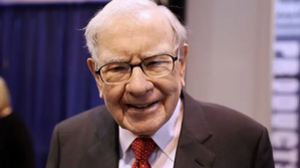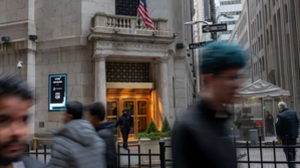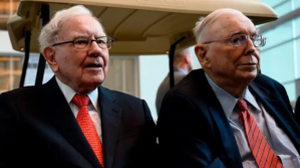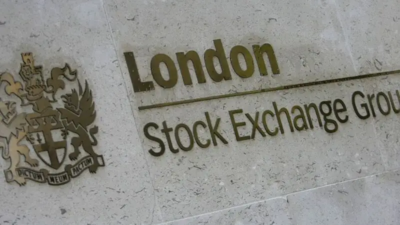Wall Street learns an important lesson. Don’t fight the Fed
A version of this story first appeared in CNN Business’ Before the Bell newsletter. Not a subscriber? You can sign up right here. You can listen to an audio version of the newsletter by clicking the same link.
A lackluster inflation reading sent US stocks into a nosedive on Tuesday just one day after markets printed new all-time highs.
That sudden volatility highlights something that we often write about in Before the Bell: the major mismatch between policymaker and investor expectations for interest rate cuts this year.
Federal Reserve officials, including Chair Jerome Powell, have repeatedly said they envision at most three rate cuts in 2024.
Wall Street, meanwhile, has ignored those warnings and has opted to practice unflinching optimism instead. Investors, who have come down from lofty dreams of seven rate cuts in 2024 late last year, were still expecting four to five cuts in 2024 as of Monday, according to the CME FedWatch Tool.
But markets had their worst day on Tuesday since March 2023, and that drop – the blue chip Dow fell 525 points or 1.4%, the S&P 500 was also down 1.4% and the tech-heavy Nasdaq Composite was 1.8% lower – was partially the result of a great reckoning for traders.
It’s not the first time they’ve had to learn an important lesson: Don’t fight the Fed.
What’s happening: The pace of price hikes eased off less than expected in January.
The first measure of inflation for 2024, the Consumer Price Index, showed that prices rose by 3.1% for the 12 months ended in January, according to Bureau of Labor Statistics data released Tuesday. That marks a step back from December’s 3.4% rate and a dramatic cooling from the 6.4% increase seen in January 2023.
On a monthly basis, the CPI rose by 0.3% in January, with stubbornly high shelter costs accounting for two-thirds of the gain, according to the BLS.
US Treasury yields surged following the report. The 2- and 10-year Treasury yields rose to 4.6% and 4.3%, respectively. Higher bond yields could mean more bad news for stocks: Bonds compete with stocks for investors’ dollars, and when yields go up, equities often go down.
It’s a lot for investors to take in.
“A market that forcefully expected earlier easing - fortified by a series of rate cuts throughout the year – has had to digest not just a barrage of consistent Fedspeak, but the stark reality that the Fed can still not declare victory on its long campaign to quell inflation,” said Quincy Krosby, chief global strategist for LPL Financial.
One bad day doesn’t make a market downturn; the S&P 500 is still up by more than 3.8% so far this year and is trading near its all-time high. But market volatility has returned, and the waters have grown choppier for traders.
“While investors thought the days of worrying about volatility were behind them, this inflation print reminds that this isn’t true,” said Arnim Holzer, a strategist at Easterly EAB Risk Solutions.
Bad for the markets, good for the Fed: Markets clearly don’t often take kindly to higher-for-longer interest rates, which can negatively impact earnings and stock prices.
That may be what the Fed wants.
When markets fall on inflation news, central bank officials have said in the past, It means that people understand the seriousness of the Fed’s commitment to getting inflation rates back down to their long term goal of 2%.
Plus, loosening financial conditions ahead of expected rate cuts and much higher stock prices both contribute to stronger housing activity, which stokes inflation rates, said José Torres, senior economist at Interactive Brokers, in a note on Tuesday.
“Shelter accelerated at the fastest clip in 11 months, as improving developments in the sector boosted prices, transactions and rents,” he wrote. “Housing costs are a huge component of American budgets, comprising roughly a third of the CPI. Animal spirits in markets that are generating fierce rallies are an impediment to the Fed’s inflation battle to the extent that they propel demand and prices. Shelter inflation will remain a risk.”
What comes next: Tuesday’s report stoked fears in investors about what might happen if inflation re-accelerates, said Chris Zaccarelli, chief Investment officer for the Independent Advisor Alliance. That would mean the Fed could even resume raising rates, which would “have a major impact on stock prices.”
But, he noted, those fears don’t quite represent our current reality. Inflation is still on a downward bend, and it doesn’t always fall in a straight line.
“This is only one month’s report, and if next month’s report shows a decline in inflation then this will have been just a bump in the road,” he said. “But if we see a new pattern of inflation stalling out at current levels (or worse increasing from here) then the stock market has further to fall.”
Carl Icahn buys a huge stake in JetBlue at bargain prices
JetBlue’s stock soared more than 14% in premarket trading Tuesday after financier Carl Icahn disclosed late Monday that he had taken a 9.9% stake in the company.
Icahn paid an average of $3.56 a share for his 33.6 million shares of the stock, according to the filing. Shares of JetBlue closed Monday at $6.07 a share before leaping 22% to nearly $7.40 a share on Tuesday, reports my colleague Chris Isidore.
The activist investor’s filing said he has discussed, and intends to continue to discuss, the possibility of gaining a seat or multiple seats on the airline’s board, and he said that he could buy additional shares.
“We are always open to constructive dialogue with our investors as we continue to execute our plan to enhance value for all of our shareholders and stakeholders,” said a statement from JetBlue following Icahn’s filing.
His purchases started on January 26, a week after a federal court blocked JetBlue’s proposed purchase of Spirit Airlines. JetBlue and Spirit are appealing the decision, but JetBlue said in a filing last month that it believed it could still exit the deal because the court ruling had blocked it from closing by a deadline set in the merger agreement.
Analysts had suggested that JetBlue was only interested in pursuing the deal, assuming it was allowed by the court, at a significantly lower price.
A typo in Lyft’s earnings release sends stock soaring – briefly
A typo in Lyft’s fourth-quarter earnings report caused the rideshare company’s stock to surge and then dramatically reverse course on Tuesday.
In an earnings statement released after the bell, Lyft estimated its gross margin would expand by 500 basis points, or 5 percentage points. That sent the company’s stock shooting higher, reports my colleague Samantha Delouya.
However, Lyft appeared to include an errant zero in its numbers: The company’s actual estimate is much lower, at 50 basis points or a half a percentage point.
On Lyft’s earnings call, held shortly after the release, the company’s chief financial officer, Erin Brewer, provided the correct estimate.
Lyft’s stock surged to $19.70 at its post-earnings release high, after trading around $12 per share during the day, representing a gain of 62% from its close.
However, the stock dramatically reversed course after Brewer’s correction, trading around $14.13, for a gain of around 18% from the day’s close.
Maybe You Like
London Stock Exchange urged to do more to hold onto retail traders
The UK stock market needs to improve investor communication and engagement in order to retain its individual traders, according to a report from online trade and investor provider CMC Markets. ADVERTISEMENTUK retail investors are increasingly...
Hargreaves Lansdown rejects private equity takeover bid
The UK investment platform says the offer from a group including the Abu Dhabi Investment Authority undervalues the firm. ADVERTISEMENTHargreaves Lansdown has rebuffed a takeover proposal worth £4.67 billion (€5.48 billion) made...
Ferrovial set to offload UK regional airports amid Heathrow deal uncertainty
Ferrovial is planning to sell its stake in three UK regional airports amid difficulties in finalising its £2.4bn sale of a 25% stake in Heathrow. ADVERTISEMENTSpanish infrastructure company Ferrovial is reportedly putting up for sale...



























